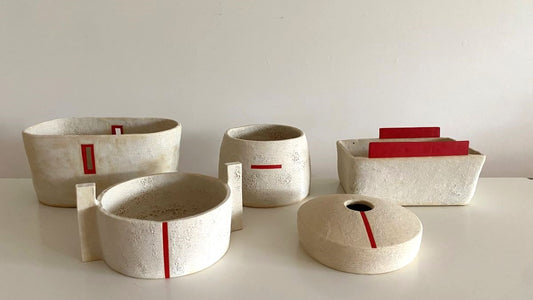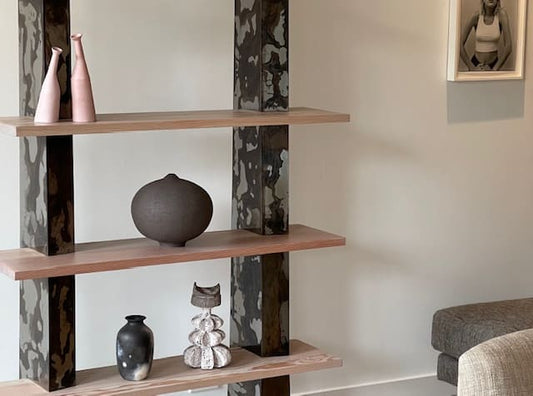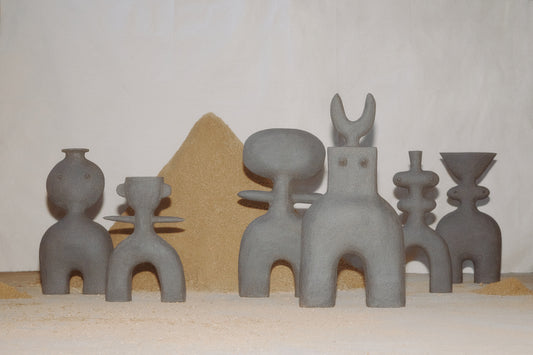Allow me to formally introduce you to four more artists who I admire greatly. Of course, I admire their artistic talent, but I also admire their courage to pursue different career paths and explore their interests and passions until they found something that felt right. I can certainly relate to that. These four artists have had previous experience working in the fields of architecture and design and I love how these disciplines influence their current work.

Nadine Schelbert
Los Angeles, USA
Nadine is originally from Switzerland and studied at the esteemed Lausanne Hotel School. After living and working in Japan, Hong Kong, and Ecuador, she moved to Los Angeles and attended the Art Center College of Design. A role as a creative director at a world renowned water feature firm followed. However, after working on large scale commercial design projects, Nadine was keen to return to a practice that was of the moment, and one in which she could execute her sculptural vision.
Clay provided the perfect material to fulfil that desire. The body of work presented by Vessels + Sticks centres on the transformation of two dimensional slabs into three dimensional sculptural forms through the assembly of these parts. Exploration of glazes that encapsulate a sense of age, is also of great interest and is explored in her work.

Cana Dai
Montreal, Canada
Cana moved from Turkey to Canada to pursue an education and career in architecture. The artist’s ceramic practice builds upon her theoretical knowledge and technical skills in the fields of architecture and art as well as her own personal experiences. She describes her work as an exploration of the functional and sculptural potentials of clay as a material, as well as an expression of how she understands the world, personally and professionally.
Cana explores various handbuilding techniques such as coiling, pinching and slab building. The series of branched vases and candlesticks for Vessels + Sticks conjure memories of candelabras on her grandmother’s dining room table. I love her neutral coloured, smooth textured contemporary interpretation of these traditional forms.

Heather Waugh Pitts
Dartmouth, Nova Scotia
Heather originally studied Human Ecology in university, specifically the interdisciplinary and transdisciplinary relationship between humans and their natural, social and built environments. With this background, a career in interior design certainly makes sense. The pursuit of assisting others in the creation of meaningful spaces that reflect their lifestyle, interests, and unique personalities flows beautifully into a ceramic practice focused on incorporating lived experiences into the clay.
This self taught ceramic artist creates raw, authentic artworks that certainly reflect interactions with the natural world around her (sea, sand, plants etc) as well as a lifestyle infused with a love for cooking, entertaining and spending time with family and friends.

Jane Yang D’Haene
New York, United States
Jane was born in South Korea before moving to NYC. She attended Cooper Union for their school of architecture and then worked as an interior designer for a major architectural firm for a number of years. The artist’s current ceramic practice incorporates the traditional forms of Korean pottery with a contemporary design sensibility for today’s home. She embraces texture through experimental glazes and develops her functional and sculptural forms through both wheel throwing and coil building.
Each piece is patiently crafted and honours conceptual ideas rooted in art and culture within a contemporary design context. The playful blend of these disciplines results in truly beautiful works that can easily be imagined and incorporated into any personal space.





